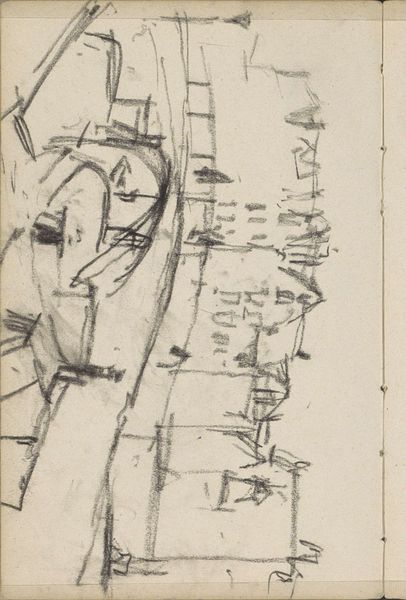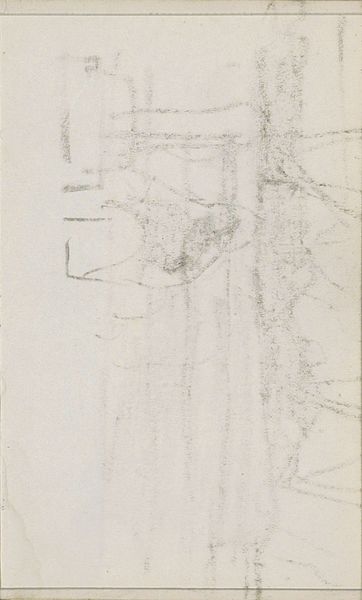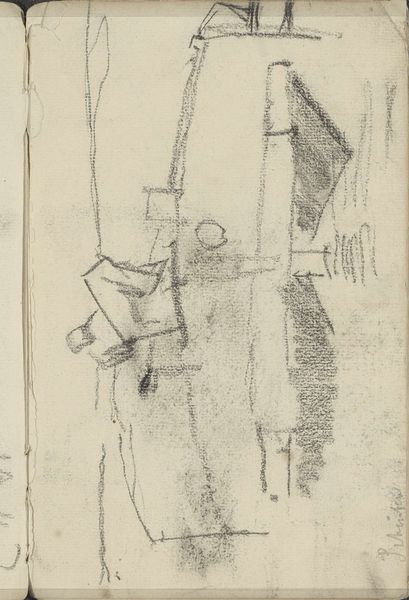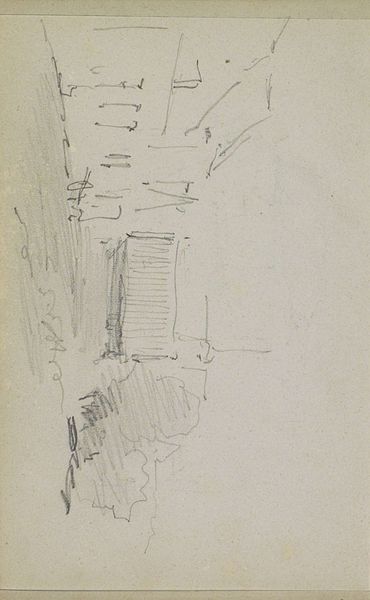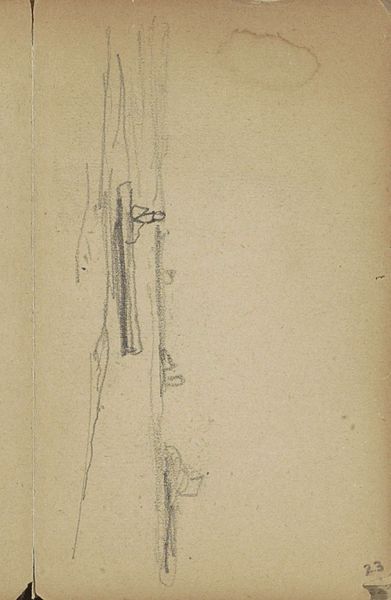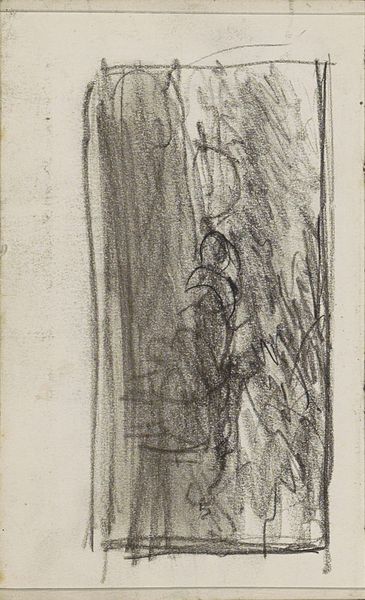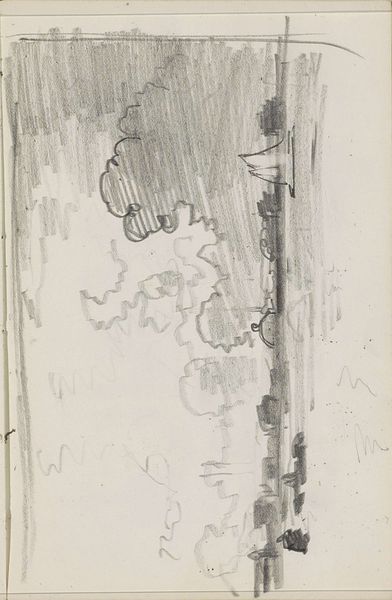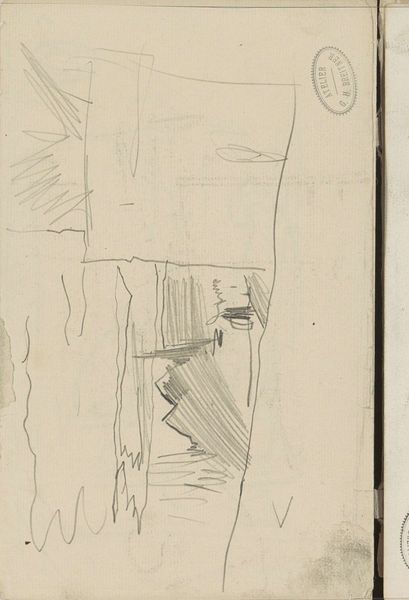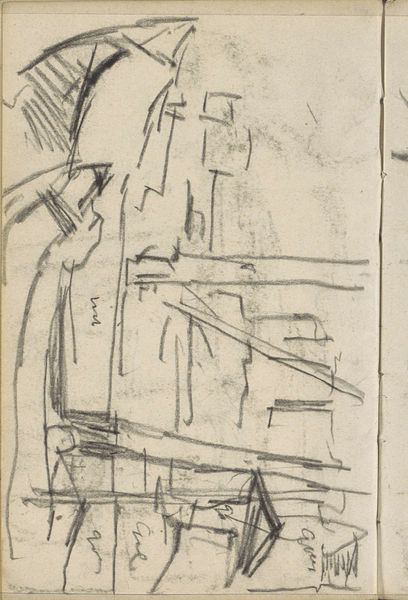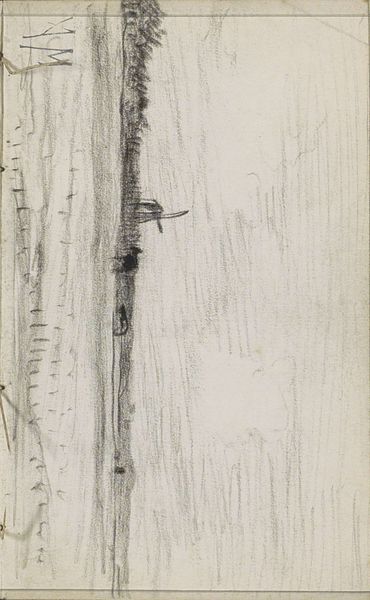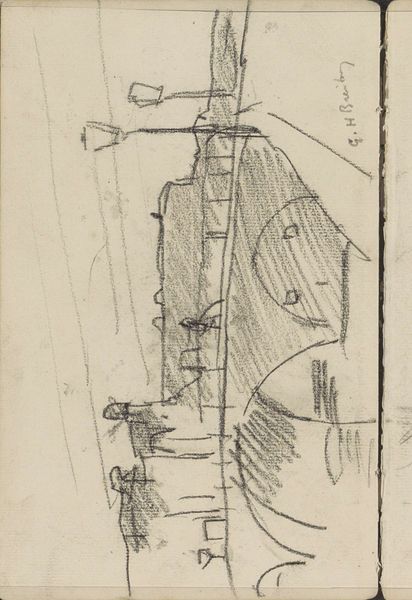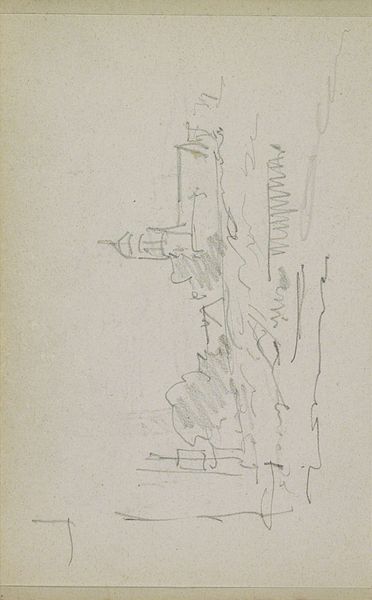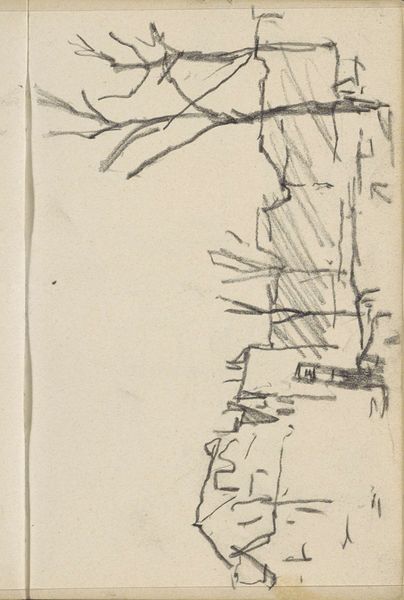
drawing, pencil
#
drawing
#
impressionism
#
pencil sketch
#
landscape
#
pencil
#
sketchbook drawing
Copyright: Rijks Museum: Open Domain
Editor: This drawing, "Molen in een landschap," or "Mill in a Landscape," by Anton Mauve, was created sometime between 1848 and 1888. It's a pencil drawing and looks almost like a fleeting thought captured on paper. What strikes you most about its composition? Curator: I am immediately drawn to the stark contrast created by the artist’s manipulation of light and shadow. Notice how Mauve uses densely packed, dark strokes of graphite to define the windmill's structure, setting it against the relatively untouched, light-filled space of the paper. It creates an impactful visual tension. How do you read this effect? Editor: It feels unfinished, like a memory rather than a precise depiction. Does that reflect a specific artistic goal or something about Mauve's technique? Curator: It can be considered an aesthetic choice, especially within the context of evolving artistic practices where capturing fleeting impressions gained prominence. Here, Mauve uses the texture and directionality of his pencil strokes to model the form. Observe, in particular, how the lines converge to suggest depth and dimension of the mill's form against a relatively stark landscape. What is your impression of his formal reduction? Editor: I see it as simplifying to emphasize the essential elements of the scene, but what does this style communicate beyond a simple representation of a windmill in a field? Curator: Think about the medium itself, the humble pencil, and its inherent qualities. It is a direct medium, allowing for immediate expression and correction. Mauve uses these qualities to convey immediacy, the sketch capturing the sensation rather than striving for precise photographic realism. It reflects the ephemeral and the artist's presence. What do you think is more emphasized, precision or emotional affect? Editor: Definitely the feeling and immediacy. Thanks, I never would have analyzed it like that. I was too focused on the 'what' rather than the 'how' and 'why' of his artistic decisions. Curator: Exactly. Considering such visual grammar and language of visual structure unlocks the layers in the artwork and helps appreciate its significance.
Comments
No comments
Be the first to comment and join the conversation on the ultimate creative platform.
